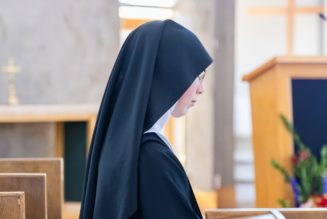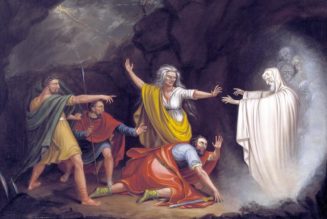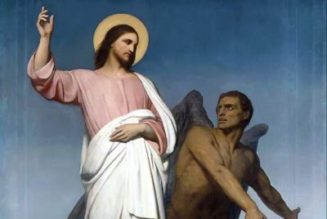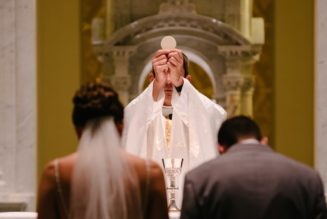By Phil Lawler ( bio – articles – email ) | Jan 05, 2022
Informed sources in Rome predict that the long-awaited apostolic constitution reorganizing the offices of the Roman Curia will be released sometime early this year.
But then, informed sources said exactly the same thing last year. And two years ago, more than a few Vatican-watchers thought the document would be published early in 2020. After all Pope Francis had revealed the title of the apostolic constitution (Praedicate Evangelium), which was already in draft form, in December 2019.
Months have now passed since members of the Council of Cardinals—the group created to advise the Pontiff on Curial reform—disclosed that the document was in final form, on the Pope’s desk, awaiting his approval. In the press statement released after their most recent meeting, in December, the Council of Cardinals did not even mention the document; it seems that their work on that project is done. So why are we still waiting for the final result?
Decisive moves, missing paperwork
Is Pope Francis hesitant about making changes? Hardly. He has already created two new dicasteries, formed by merging existing Vatican bureaus. He has made dozens of important personnel changes, some of them abruptly. Within just the past two years he has relieved a half-dozen powerful cardinals (Baldiserri, Bertello, Becciu, Sarah, Stella, Turkson) of their Vatican offices. He has commissioned investigations of the existing Curial offices, obviously intent on eliminating inefficiencies.
Yet while the Pope has been quick to make changes, he has not kept up with the paperwork to support the moves. Vatican reporter Andrea Gagliarducci points out that although the Pope appointed Cardinal Kevin Farrell as camerlengo two years ago, Cardinal Farrell has not yet been sworn in to that office. This is not a trivial matter, since the camerlengo is responsible for the temporal affairs of the Vatican if a Pontiff dies. He is assisted in that work by the members of the Apostolic Camera—but the prelates who make up that group have all completed their 5-year terms, and no replacements have been named. These are formalities, no doubt; we all know how the process would work in practice. But at least on paper, as Gagliarducci concludes: “In the event of the Pope’s death or resignation, it is to be determined who will manage the sede vacante.”
Increasing papal power
This cavalier attitude toward legal documents is not a matter of mere oversight, Gagliarducci argues. “More than sloppiness, it becomes part of a precise, systematic modus operandi, which centers the whole institution and its functioning on the Pope himself.” By making so many decisions personally, without consultation, the Pope is systematically draining off the autonomy—and thus the authority—of the Roman Curia.
Perhaps this is a good thing. The Roman Curia serve only to carry out the mission of the Sovereign Pontiff. Too often, Vatican bureaucrats have used their influence to build up their own personal fiefdoms, enforcing their own ideas on diocesan bishops, and/or filtering out information that they do not want to reach the Pope. Genuine curial reform would guard against such abuses.
However, while he has inveighed against Vatican bureaucrats with their own private agendas, and called for decentralization of Church authority, Pope Francis has not hesitated to use curial offices to enforce his own policies. The recent edict from the Congregation for Divine Worship, instructing diocesan bishops on how they should govern the use of the traditional liturgy, seems a clear example of curial power encroaching on the canonical rights and duties of diocesan bishops. On the question of curial reform, current Vatican rhetoric does not match reality.
The financial trial: a test
The landmark financial trial now underway before a Vatican tribunal is another test of the reforms attempted during this pontificate. The fact that such a trial could occur, with an influential cardinal as the chief defendant, might suggest that real change, and the prospect of genuine accountability, has come to the Vatican. But the trial is beginning only after Pope Francis issued two rescripts, essentially changing the procedural rules, to avoid further exposure of the Vatican’s dirty linen.
In fact seasoned Vatican-watchers are skeptical about the likely outcome of the trial. John Allen of Crux predicts that there will be no convictions. Ed Condon (whose Pillar site has set a high standard for reporting and explaining the complexities of the financial scandal), concludes his most recent analysis with an even stronger caution: “If the trial ever gets underway.”
Condon explains that Vatican prosecutors are working under difficult constraints, because Pope Francis apparently gave his approval to financial transfers at the center of the controversy. As Condon also points out, the papal approval does not clear others of potential charges, nor does it prove that the Pope was involved in any wrongdoing; he may have had little choice, because of the previous (criminal?) acts of others involved.
Still, whatever truth emerges from the trial (“If the trial ever gets underway”) is sure to sharpen the general perception that financial corruption within the Vatican has not yet been uprooted. And bear in mind that the specific focus of the trial—and the locus of the corrupt practices under scrutiny—has been the Secretariat of State. Which, by all accounts, is the one office of the Roman Curia whose powers will not be trimmed by Praedicate Evangelium (if that document ever appears).
Sound Off! CatholicCulture.org supporters weigh in.
All comments are moderated. To lighten our editing burden, only current donors are allowed to Sound Off. If you are a current donor, log in to see the comment form; otherwise please support our work, and Sound Off!

There are no comments yet for this item.
Join Our Telegram Group : Salvation & Prosperity









